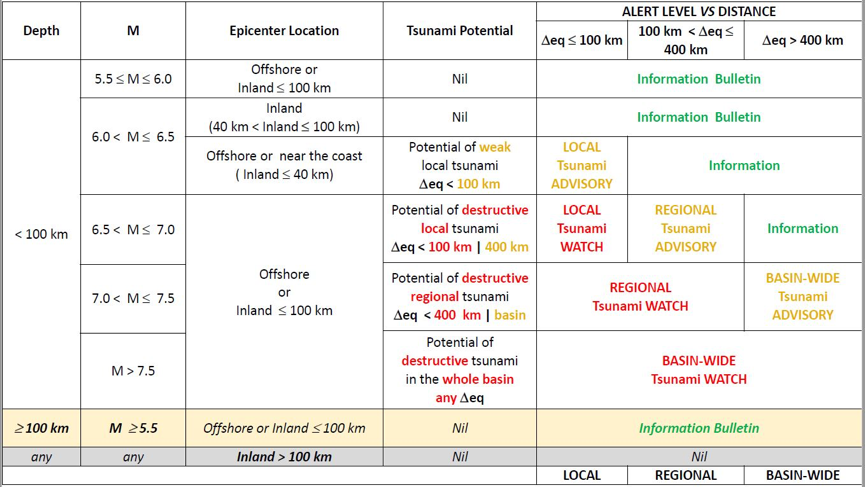The decision matrix is a tool necessary to consistently define possible event scenarios following a possible tsunami and to make decisions quickly, according to scientifically sound criteria, avoiding arbitrary evaluations. The decision matrix is used to obtain a very fast estimate of the severity of the tsunami: in the open sea a tsunami can, in fact, reach and exceed the speed of 800 km/h, in other words in just one minute the wave can travel almost fourteen kilometres, reaching the coast in a very short time, especially when the seismic source (i.e. the fault which generates the earthquake) is close to the coast (as you can see here). Location and magnitude are two very important parameters for assessing whether a certain earthquake can generate a tsunami.
However, the characteristics of tsunamis depend on many other factors, such as the focal mechanism of the earthquake (the type of movement of the fault blocks), the vertical displacement of the sea floor and the shape of the sea floor encountered by the waves along their path, which, particularly near the coast, can greatly amplify or mitigate the effects of the tsunami. Therefore, the assessments of the alert levels at the various forecast points can also be very different from the actual ones, giving rise to false alarms or to situations which differ greatly from the expected ones.
It is not easy to find a good compromise between speed and accuracy when estimating the potential severity of the tsunami, which can ensure an effective activation of the alert and of the Civil Protection measures for managing the emergency.
For this reason, the CAT-INGV has developed and is trialling an alternative method to the decision matrix, the Probabilistic Tsunami Forecast (PTF), which defines possible scenarios on a probabilistic basis, combining the earthquake parameters estimated immediately after the seismic shock with information already acquired about the tectonic processes and seismicity of the source area.




